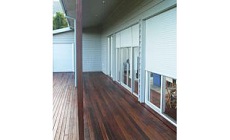


About
We Are a family run Business that aim to help people in the purchase of Building products . With over 40 years expereince in the building supply industry we aim to do our best in helping people find the right product or at least point them in the right direction to companys that can help.
Brochures and links
Medium Density Fibreboard
A premium quality wood composite panel with a fine homogenous structure uniform throughout its thickness, and with an extremely smooth surface.• 1800 x 1200
• 2100 x 1200
• 2400 x 1200
• 2700 x 1200
• 3600 x 1200
• 2400 x 1800
• 3600 x 1800
All available as 2.5,2.7, 3, 4, 4.75,5.5, 6, 7, 9, 12, 15,16, 18, 25, 30, 32,35,38 and 40mm thicknesses
Nonstandard sizes also available.
Applications and Uses
1. Interior furniture & joinery
2. Shop fittings
3. Ceiling & wall linings
4. Flooring overlays
5. Shelving & substrate for overlay materials e.g. Natural Wood Veneer, PrimeMelamine, vinyls, printed papers & foil.
Available in two densities:
1. Regular density for standard use, or
2. Light, for use where weight is of consideration.
Product Range:
• MDF regular thick panel - has a superior uniform density for edge profiling. Average density is 725kg/m3 to 750kg/m3.
Thicknesses available: 9, 12, 16, 18, 25, 30 and 32mm.
• MDF regular thin board - an interior panel of very high quality that cuts, drills and routs cleanly.
Several sheets can be laminated and built into a curved shape.
Not for exterior use.
Average density 800kg/m3.
Thicknesses available: 3, 4, 4.75, 6 & 7.5mm.
• MDF light panel - average density 600kg/m3, i.e 20% lighter than standard density panels.
Usage is similar to MDF Panel.
Thicknesses available: 12, 16, 18, 25 & 30 & 32mm.
• MDF MR panel - a panel specially formulated for use in areas with higher than normal moisture areas, e.g. kitchens and laundries.
Average density 725kg/m3. Thicknesses available 9, 12, 16, 18, 25 , 32,35,38 and 40mm.
• There is also now are range of formaldehyde emissions levels that are available
• E1 which is a low formaldehyde product this is general mdf
• E0 which has a very low formaldehyde emission
• SE0 super E0 almost no formaldehyde emission
• NAUF the best no added urea a formaldehyde added in the making so the levels are so low that it is only the natural formaldehyde that is produced by the woodfibre
• To understand what these emission mean read above 4 standard are basically all that is allowed in Australia , where other countries allow higher emissions which can have effects on your health .
Gallery








